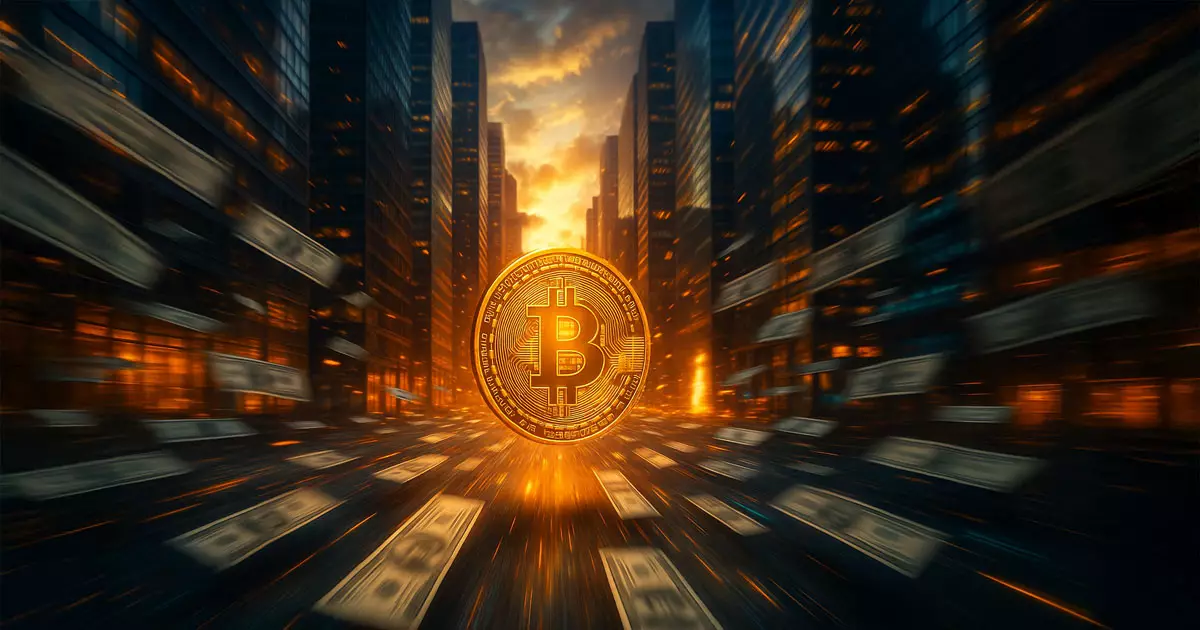In an era defined by dynamic cryptocurrency trading, the recent drop in Bitcoin (BTC) inflows on Binance to a mere 5,700 BTC is more than a statistical blip—it is a concerning trend that ought to be scrutinized. This figure is less than half of the historical average of 12,000 BTC that has characterized the market since 2020. What’s particularly alarming is its stark contrast to the significant inflows during the FTX-induced market panic in late 2022 when deposits soared to 24,000 BTC. Celebrating the stability of Bitcoin above $105,000 may provide a false sense of security, but the foundational analysis suggests this is symptomatic of a deeper malaise that can’t be ignored.
Trading Patterns and Implications
Notably, past instances where inflows peaked have often preceded a temporary pullback in Bitcoin prices. Take the cases in August and March, where net inflows exceeded 17,000 BTC and 20,000 BTC respectively, both correlating with significant price adjustments. These fluctuations reveal a troubling pattern: trading activity on Binance acts as a barometer for market sentiment. The current lack of substantial inflows may signal that traders, both retail and institutional, are more inclined to hold their positions rather than cash out, possibly indicating a pervasive caution within the market.
Market Dynamics: A Double-Edged Sword
The implications of these declining inflows cannot be understated. While some might interpret diminished deposits as a testament to increased holding sentiment, such interpretations could be naive. The data manifests an unusual scenario where reduced sell-pressure might convey complacency among investors, who could be ignoring broader economic indicators that suggest an imminent market adjustment. The fascinating paradox here is that even with decreased inflow, supply on order books remains low, providing a conducive environment for potential price increases. However, this delicate balance could be disrupted at any moment due to external shocks—a reality that Bitcoin investors should remain acutely aware of.
Deciphering the Numbers: Analytical Insights
CryptoQuant analyst Darkfost highlights that these contractions indicate a “holding phase.” Yet, isn’t it more apt to frame this stagnation as indicative of broader uncertainty within the market? The fact that Binance represents about 37% of centralized exchange trading volumes signals its critical role in interpreting market intentions. While strategically tracking inflows might minimize noise cooked up by transfers or custodial reshuffles, it also simplifies the unpredictable nature of market behavior.
The timing of lower inflows, aligned with a cooling in sell pressure, doesn’t necessarily herald a robust path forward. It opens up potential for speculative trading on thinner liquidity, which is a risky affair given the market’s inherent volatility.
A Call to Vigilance Amidst Complacency
Ultimately, Bitcoin’s market dynamics are shifting, and shallow inflow levels coupled with prevailing economic uncertainties should serve as a wake-up call. Beneath the gleaming price metrics lies the possibility of lurking dangers. The lack of vibrant trading activity could be masking an unrealized risk that, if left unchecked, could spark a wave of selling pressure down the line. Investors need to adopt a keen sense of vigilance, not become complacent amidst price euphoria. Without renewed momentum in inflows, the market could face some disquieting and unforeseen challenges ahead.

